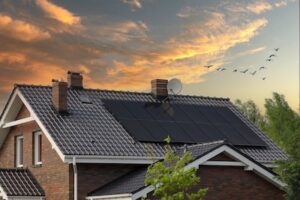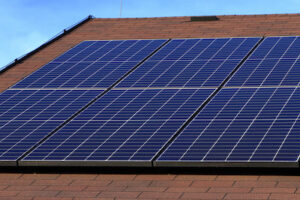Solar Panels in Extreme Climates – Challenges and Solutions for Harsh Environments
Solar panels have always been the biggest friends of humanity’s quest for sustainable power sources. And, as nations worldwide shift their focus towards cleaner and more environmentally friendly energy solutions, harnessing the sun’s potential through solar panels has become more and more popular. However, this transition isn’t without its problems, especially when you consider the wide array of the planet’s climates.
From the scorching desert landscapes to the endless polar expanses, solar panels face all kinds of challenges that can significantly influence their efficiency and longevity. Despite these hurdles, innovative solutions are constantly emerging to conquer the problems posed by extreme climates. These solutions that make some promising strides, especially regarding the cost to finance solar panels, also ensure that solar energy continues to illuminate people’s lives with a reduced environmental impact.

Challenges of Using Solar Panels in Extreme Climates
Even though solar panels are a beacon of hope for sustainable energy, their performance is significantly tested when deployed in the harshest of environments. So, let’s delve into some of the most important challenges that solar panels encounter when faced with extreme climates.
1. Temperature Extremes
Extreme temperatures, whether scorching or freezing, can exert considerable stress on solar panel performance and durability. High heat can lead to efficiency losses and even potential damage, affecting energy output as well. In contrast, sub-zero temperatures can lead to reduced efficiency and structural concerns. Understanding how temperature fluctuations affect solar panels is important for devising effective strategies to mitigate their effects.
2. Battling the Elements
Solar panels exposed to the elements in harsh climates are prone to the accumulation of some problematic factors, such as:
- Snow
- Dust
- Debris
These factors can then obscure sunlight and hinder energy absorption, which can lead to reduced output.
3. Corrosion and Erosion
In coastal and high-altitude regions, the corrosive effects of saltwater and the abrasive forces of high winds pose a unique threat to solar panels. As you have probably already guessed, corrosion can degrade panel materials and connections over time, compromising both performance and longevity.
Solutions and Innovations
As the demand for solar energy only continues to rise, so does the need for innovative solutions that can overcome the unique challenges posed by extreme climates. And, with that in mind, let’s explore some cutting-edge advancements that are revolutionizing the way solar panels thrive in harsh environmental conditions.
1. Enhanced Panel Design and Resilient Materials
Designing high-quality solar panel systems with materials that can withstand the rigors of extreme climates is a logical step toward improving their longevity and efficiency. Some of the latest developments in panel materials, like robust coatings and durable substrates, all contribute to enhanced resistance against temperature variations, moisture, and other common and uncommon environmental stressors.
2. Temperature Regulation Technologies
Mitigating the effects of temperature extremes is important to maintaining optimal solar panel performance. Thankfully, there exist advanced thermal regulation technologies that manage temperature fluctuations. For example, passive cooling techniques can dissipate excess heat, and insulation measures that prevent heat loss in frigid conditions.
3. Ingenious Snow and Debris Management Strategies
In snowy and debris-prone locales, keeping solar panels clear and unobstructed is a constant challenge. However, there are some interesting innovations that are doing exactly that. From automated brush systems that gently sweep away snow to hydrophobic coatings that repel dirt and grime, these innovations ensure that panels always remain free from hindrances and continue to harness sunlight as effectively as possible.
Best Practices for Installation and Maintenance
Effectively harnessing solar energy in extreme climates goes beyond technology; it requires meticulous planning and execution, but also ongoing maintenance. Now, let’s delve into the essential best practices for the installation and upkeep of solar panels in harsh environments you should know about so that you understand how to ensure their optimal performance and longevity.
Strategic Panel Placement and Orientation
Optimal panel placement and orientation are some of the most important factors in maximizing solar energy generation in extreme climates. So, installing panels at the correct angle and orientation relative to the sun’s path ensures efficient sunlight absorption throughout the day. And, in regions with scorching heat, angling panels slightly to provide shade underneath can help manage temperature and prevent overheating.
On the other hand, in cold climates, adjustments can be made to enhance exposure to direct sunlight. Careful consideration of local weather patterns and sun angles will enable you to make the right decisions that optimize energy production and overall system performance.
Regular Maintenance
Consistent maintenance is the cornerstone of ensuring the durability and efficiency of solar panels in harsh environments. Regular cleaning routines that involve the gentle removal of snow, dust, and debris help prevent shading and allow for peak efficiency.
Also, scheduled inspections play a crucial role in identifying potential issues such as:
- Cracked Panels
- Loose Connections
- Signs of Corrosion
Addressing these problems promptly through professional maintenance or repair services protects the system’s functionality and prevents performance degradation that can happen from time to time.
Monitoring System Performance and Efficiency
Real-time monitoring technology empowers you to remain proactive in managing your systems’ health and performance. With advanced monitoring tools, you can achieve many important aspects, such as:
- Track energy production
- Identify any unexpected drops in output
- And promptly address issues that may arise
This data-driven approach allows for swift intervention and troubleshooting. This ensures that the system operates optimally even in the face of changing climatic conditions. Monitoring will also provide you with some valuable insights into long-term performance trends, enabling you to make informed decisions about system upgrades or some adjustments that will further enhance efficiency and resilience.

Frequently Asked Questions (FAQs)
Q: Can solar panels generate electricity in extreme cold?
A: Yes, solar panels can generate electricity in extreme cold, but their efficiency may be reduced. It’s important to use cold-resistant materials and maintain them properly.
Q: How do I protect solar panels from sandstorms?
A: Installing anti-reflective coatings and self-cleaning mechanisms can help protect solar panels from the effects of sandstorms.
Q: Are there specific solar panels designed for extreme climates?
A: Yes, some manufacturers produce solar panels specifically designed for use in extreme climates, with enhanced insulation and durability.
Q: Can high temperatures damage solar panels?
A: Yes, excessive heat can damage solar panels over time, leading to reduced efficiency. Proper insulation and ventilation are essential.
Q: How often should I clean my solar panels in a harsh environment?
A: It’s recommended to clean your solar panels at least once every few months, but more frequent cleaning may be necessary in extremely dusty or dirty environments.
Q: Do solar tracking systems make a significant difference in extreme climates?
A: Yes, solar tracking systems can significantly improve energy capture in extreme climates by optimizing the angle and orientation of the panels.
Conclusion
In the pursuit of harnessing solar energy’s potential even in the harshest climates, collaboration between researchers and the wider community will be more important as time passes. And, as technological boundaries continue to expand, the future holds the promise of even more innovative solutions that will further elevate solar panels’ adaptability and resilience for our homes and more.
The journey to a cleaner, more sustainable world is illuminated by the determination and dedication to conquering the challenges of extreme climates. Through relentless innovation and a shared commitment to a greener future, solar panels are poised to continue their transformative role and cast a bright light on the path to a more sustainable energy landscape.
